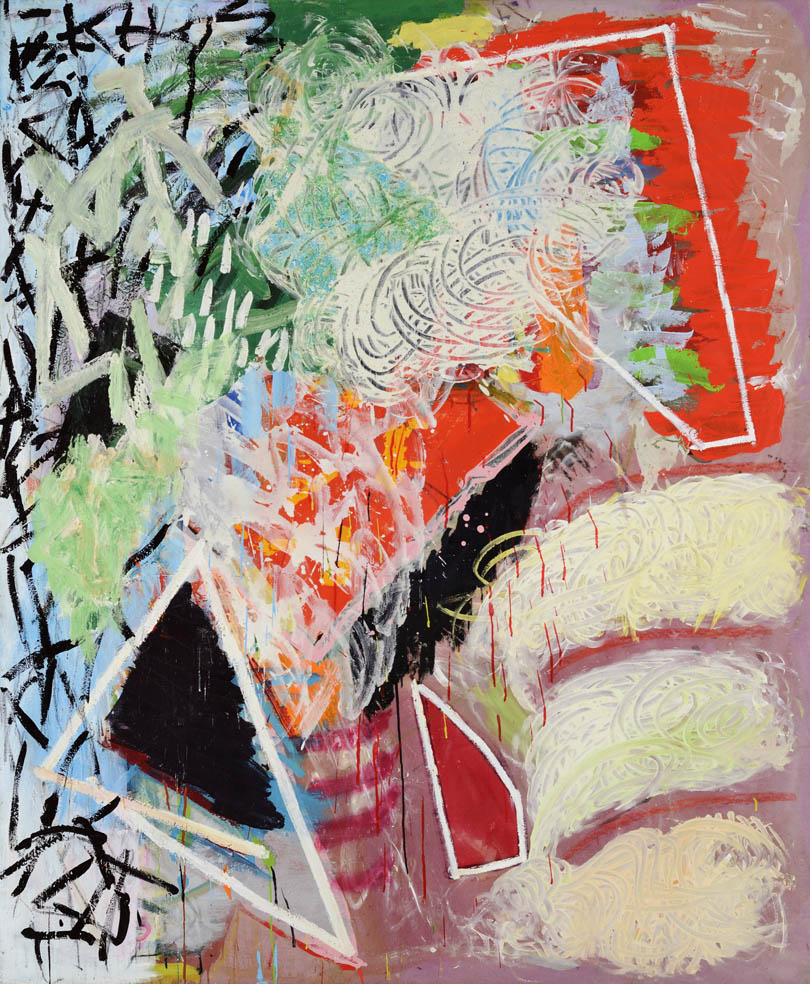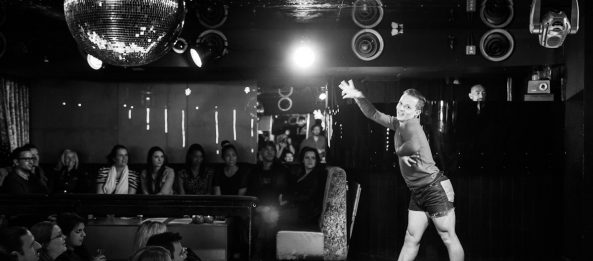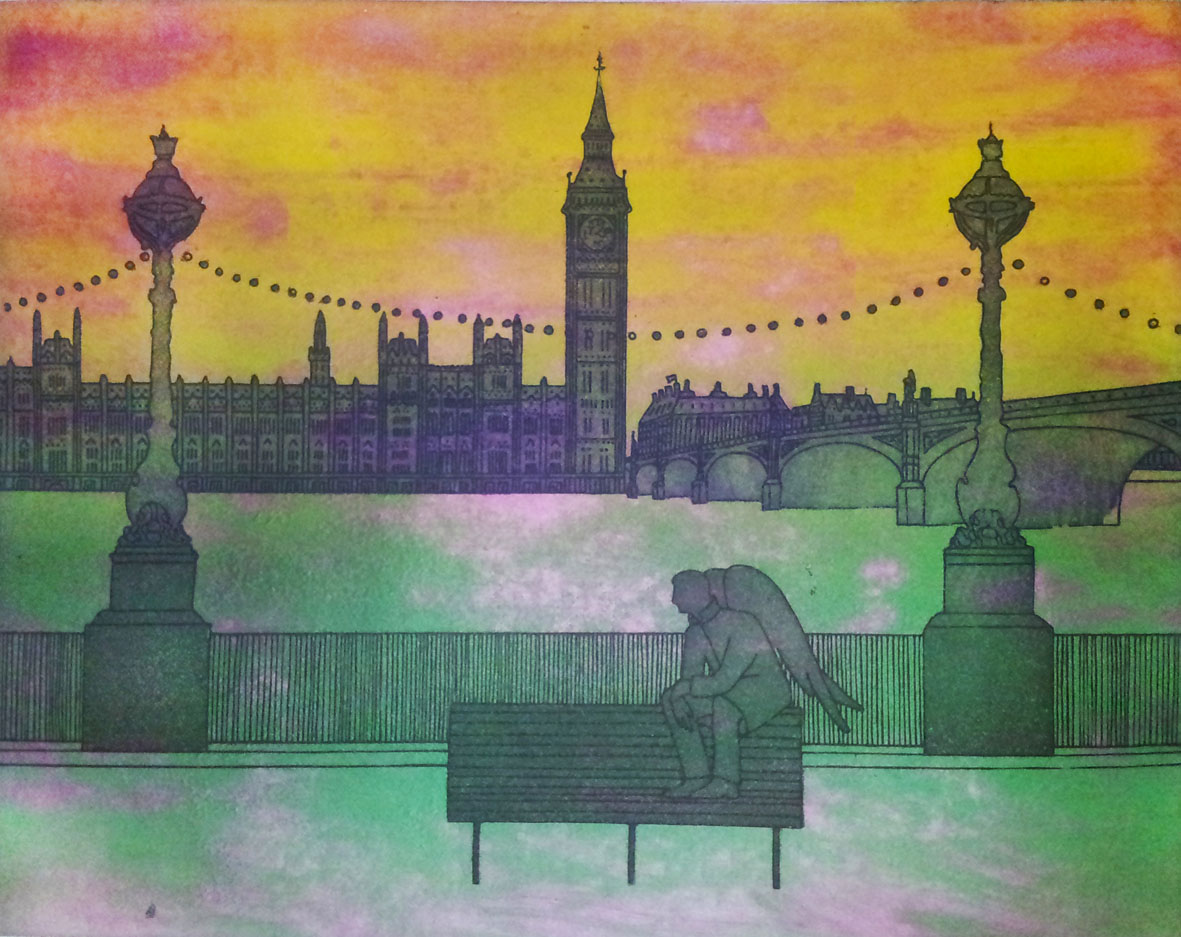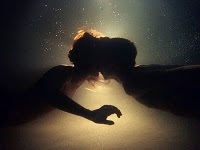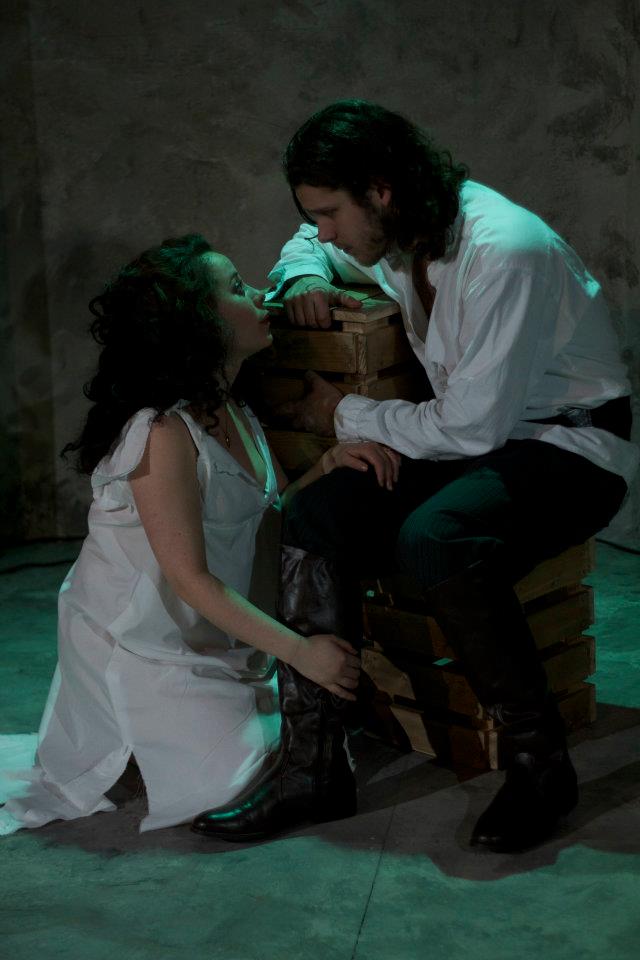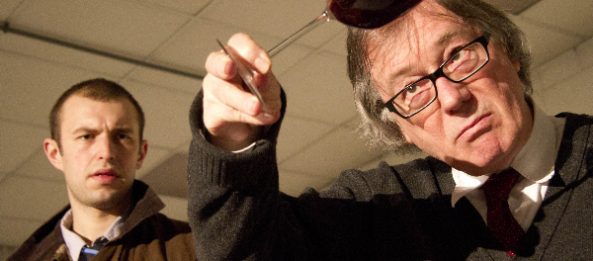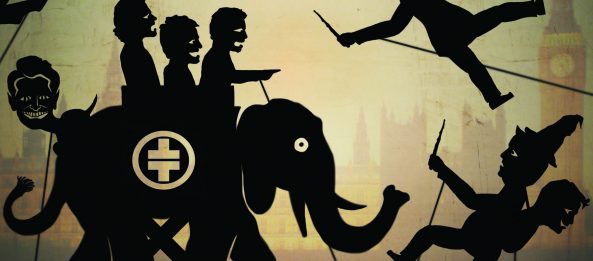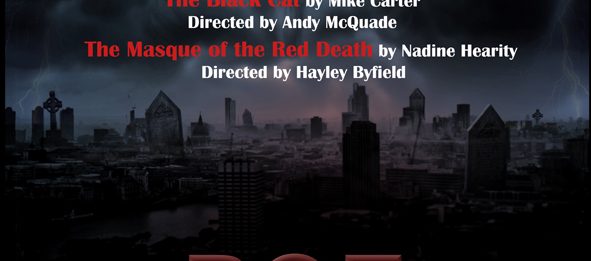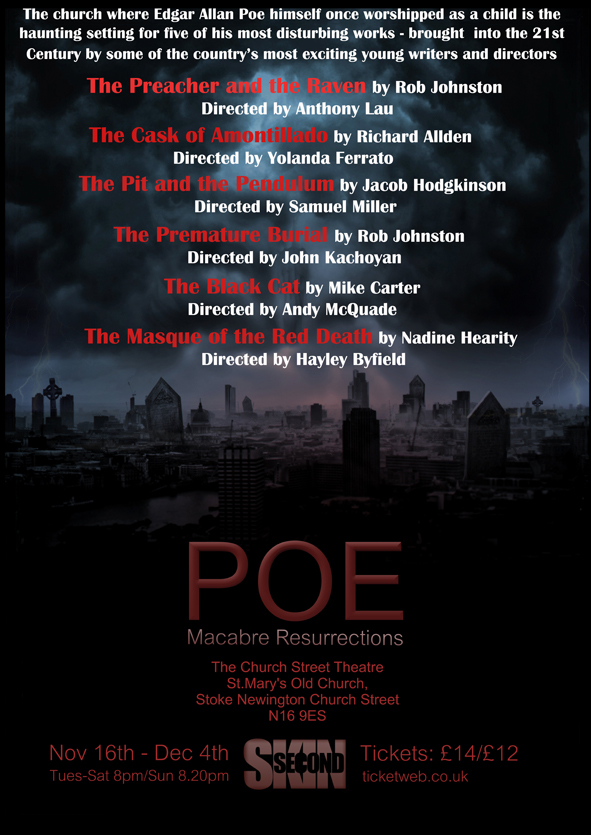 A Weekend at Vault
A Weekend at Vault
According to the publicity, Vault transforms a newly discovered labyrinth of tunnels underneath Waterloo to offer London three weeks of kaleidoscopically varied entertainment between 9 and 26 February 2012. Many of the shows in the festival are in the immersive theatre style, and whilst I have been a cast member in several immersive, promenade, and physical theatre shows, I have never been a spectator (aside from Alien Wars in the Trocadero many years ago). With this in mind, I went down to check out the opening weekend.
This was my first visit to the Old Vic Tunnels, and there was a certain frisson to arriving at Waterloo Station on a frosty February Saturday night, walking down the almost deserted street and descending the staircase into the graffiti covered underpass. Once at the door however, I was warmly welcomed and directed towards the bar to await the start of the 8pm performance.
Don’t Stray from the Path by the Wonder Club
I was excited about seeing this production, described as a beautifully dark spectacular promenade performance based on the story of Little Red Riding Hood. It started very well, with the action beginning in the bar as both Little Red Riding Hood and a musician sat on top of a couple of lockers, and other cast members came to talk to the soon to be audience. Eventually, we were all lead down the tunnel to the “Forest of Elsewhere,” where the adventure was to begin.
How to describe Don’t Stray from the Path? There was a strong physical theatre element to the show, including some excellent circus skills, and the promenade aspect was certainly there: however I think I have to come down on the side of performance art, as it was the meticulous attention to detail that really impressed me.
The Wonder Club made the decision to divide the venue into two levels, which almost doubled the room for installations, but I think it might have been better to use the height to elevate parts of the performance, particularly the aerial work, as the volume of people made it hard to see what was going on at times. The music was lovely, and one particular song held my attention during a dance where I could barely see the tops of the performers’ heads. The acting in this piece was dramatic rather than naturalistic, which I assume was a stylistic choice on behalf of the director. The ending was particularly good, with Red Riding Hood and the Woodsman bringing us full circle. The girls eerily smeared with chocolate on the way out were also very evocative of the dark side of fairy tales.
Overall, I enjoyed Don’t Stray from the Path, and would recommend it to fans of fairy tales, promenade theatre, and performance art. There were some very good ideas, and striking physical and musical performances from all concerned – it was a truly collaborative ensemble work, which makes it impossible to pick out anyone for special mention. I admired it on an intellectual level, but with a smaller audience and/or a bigger space, I could have really felt the Wonder.
Don’t Stray from the Path finished its run on 12 February. Visit http://thewonderclub.co.uk for details of future performances.
The Furies by Kindle Theatre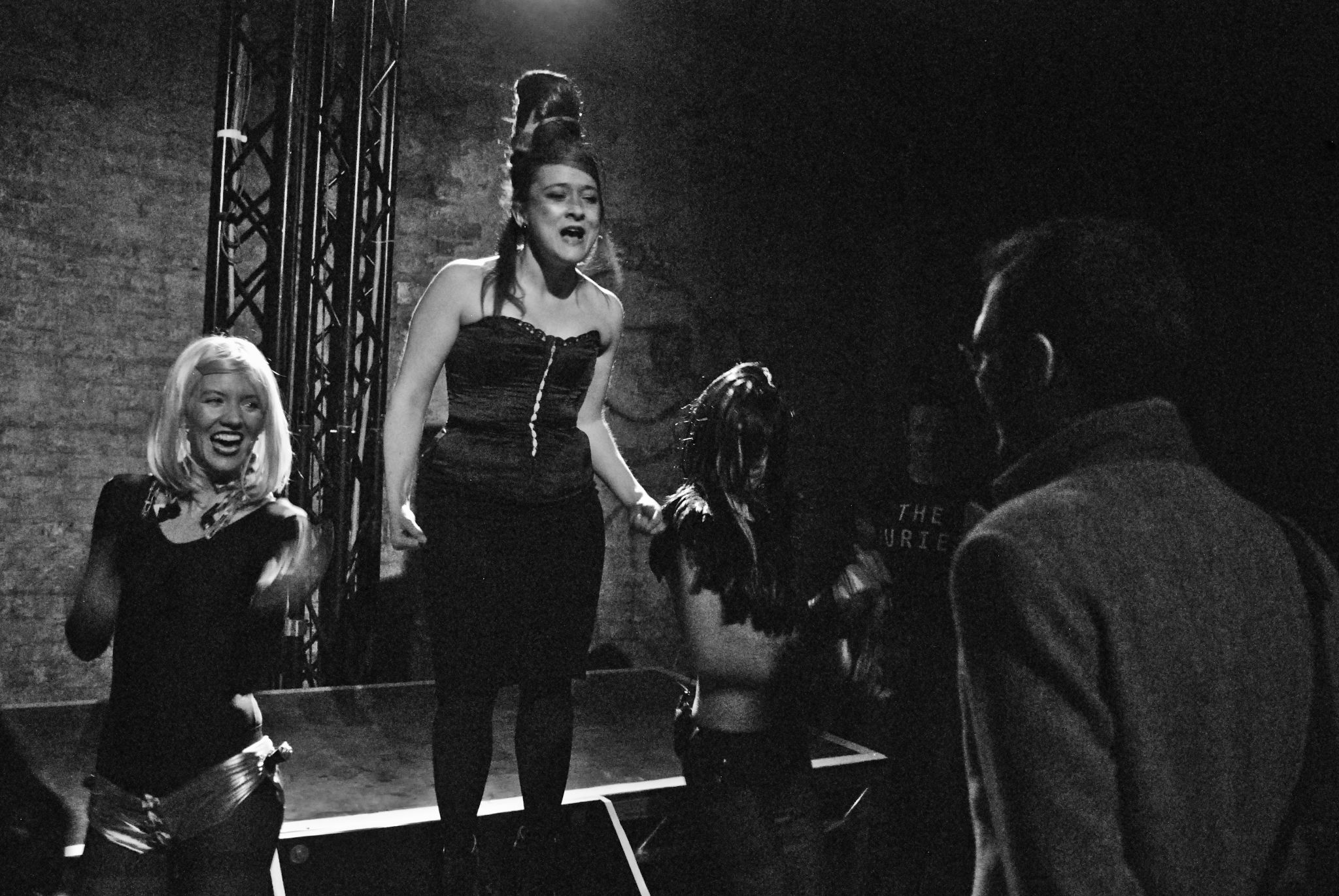
While waiting to get into the next performance, the queue was patrolled by bouncers, and T-shirts and CDs were on sale nearby. We entered a sweaty basement club, where we were greeted by the sound of pounding drums and guitar (Russell Collins and Phil Ward). And then came the girls.
The Furies is basically a rock opera telling the story of Clymtenestra. It is billed as a fusion of rock, metal and soul songs, but I would say that it is also heavily influenced by classical opera. Emily Ayres, Samantha Fox and Olivia Winteringham all have powerful voices and strong physical presence, and there wasn’t a dull moment either musically or story-wise in this audiovisual extravaganza. Clymtenestra was an operatic diva, some group songs wouldn’t have been out of place in a pop musical, and others, particularly those by Agamemnon, were pure heavy metal.
This wasn’t a promenade performance – the audience were not moving around following the action. As there was no seating, this meant standing in one spot for an hour, which for me meant being distracted from the enjoyment of the performance by physical discomfort. It wasn’t until I moved to the side and held on to a lighting rig, that I was able to be carried away by the music. Putting in seating appropriate to the setting, ie, rough chairs and tables, would only add to the atmosphere and make the audience’s experience more enjoyable – it would also make some of the show easier to see.
The Furies starts on a high and keeps getting higher, climbing to a spectacular finale. Although the staging is interesting and atmospheric, it would work equally well in a traditional theatre setting. Unfortunately I had to leave before the encore, as the next show was due to start. This is definitely one to watch. Thoroughly entrancing, mesmerising music.
The Furies is playing at Vault for the rest of the festival, ie, Thursday – Sunday until 26 February. Visit www.kindletheatre.co.uk for more information on the company.
The Great Puppet Horn by Pangolin’s Teatime
The final show of the evening was The Great Puppet Horn. Comfortably seated in the front row, I looked forward to something that would once again be a complete contrast to what had gone before. Accompanied by the Harry Potter theme music, Jeremy Bidgood and Lewis Young appeared on stage to introduce their show (the horn is ambiguous, apparently).
Puppets and political satire proved to be a serendipitous combination, and I was soon howling with laughter at The Boy Who Lived – in the East Wing (David Cameron). The audience were treated to magical explanations for university fees and immigration policy, and told about the influence of boy bands on the economy. There were also other non-political topical comedy sketches, such as The Life of Brian (Cox). But my personal favourite was Grammar Cop. Being somewhat of a pedant, grammar-wise, and a part-time English teacher to boot, it was hilarious to watch him battle his arch-enemy Mr A Postrophe.
This is basically a traditional comedy show with shadow puppets – which were excellent by the way: the skill in both their manufacture and use was evident. The only audience interaction was when, during the Grammar Cop sketch, there was a threat of reading Molly Bloom’s soliloquay – I couldn’t help begging them not to.
The Great Puppet Horn was well-paced, with the laughs coming thick and fast, and I had tears in my eyes by the end of the performance. I wouldn’t be at all surprised to see Pangolin’s Teatime on our television screens soon. Catch them if you can.
Like The Wonder Club, Pangolin’s Teatime finished their run at Vault on 12 February. Visit http://pangolinsteatime.com for news of future shows.
Vault Lates – Itchy Feet
As the puppet show was 20 minutes late in finishing, the vintage dance party was well under way when I returned to the bar area. If I say that Booker T & the MG’s Green Onions was playing when I entered, and that the last song I heard was Higher and Higher by Jackie Wilson, it will give you a flavour of the sort of floor fillers being spun by the DJ. The floor was hopping, though not unpleasantly crowded. If I’d had a friend with me I would have danced the night away, but, as I was alone, I left, like Cinderella, at midnight, to catch the last train home, already looking forward to returning the next night.
One night only at Vault. www.itchyfeetonline.co.uk
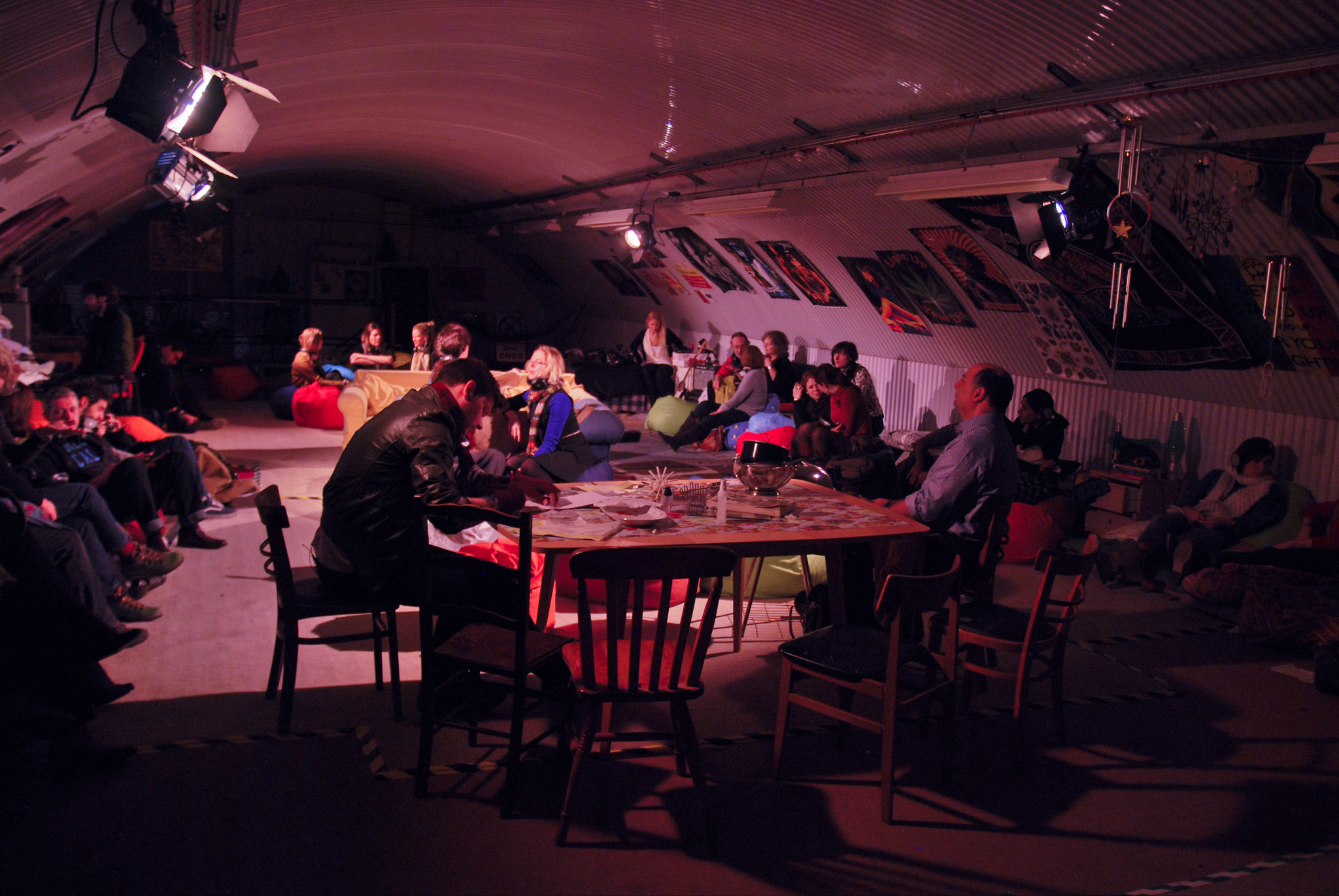 La Boheme by Silent Opera
La Boheme by Silent Opera
Audience members at Silent Opera are given headphones to wear throughout the performance, through which the live singing is mixed with the pre-recorded score. This is a very clever means of having a full orchestral sound in a fringe venue. The sound quality was excellent throughout, which I assume was due to Sound Designer Ed Currie.
After checking our coats in the cloakroom, the audience found ourselves wandering round a Christmas market where Colline (Tim Dickinson) tried to interest me in a Greenpeace campaign. We were then escorted upstairs to Marcello, Rodolfo, Colline and Schaunard’s flat, where the opera began.
We were moved between several locations during the course of the show: some worked better than others. The flat, for example, was excellent, with various forms of seating round the outside (I sat on a blow up chair the first time) and the action taking place in the middle. The scene in the bar worked pretty well also. However, the occasions where the audience was standing three deep against the wall didn’t make for good visibility (I kept missing all the snogging bits!) and I would have found Mimi’s death scene more moving had I not been sitting on a cushion on a crowded floor.
I am a bit of a sucker for opera, and have been lucky enough to see both the Royal Opera and the ENO over the years. Musically, Silent Opera gave them both a run for their money. The score, by the London Symphony Orchestra, was wonderful, and all of the singers gave flawless vocal performances with emotion and pathos. The acting was strong, particulary by Mimi (Emily Ward), Rodolfo (Alistair Digges), and Colline (Tim Dickinson), as well as by those in the non-singing parts. Daisy Evans’ libretto was clever, interesting, and quite funny in places. The setting of modern day London worked well, and the headphones seemed to add, rather than distract from, that sense of being absorbed in the story which to me is the sign of good theatre (particularly opera or musical). I would have no hesitation in recommending this production to anyone, whether an opera buff, or someone experiencing the genre for the first time.
Silent Opera is playing at Vault for the rest of the festival, ie, Thursday – Sunday until 26 February. Visit http://silentopera.co.uk for more information on the company.
So, after spending the weekend at Vault, what are my feelings on immersive theatre? They are mixed. Don’t Stray from the Path was a promenade performance with lots of audience interaction, but with the other shows the audience interaction was limited and sporadic. Yes, I was close to the performers, but that is generally the case at fringe venues. I think perhaps there is a delicate performer/audience balance that needs to be achieved – although I am not suggesting one audience member at a time, as happens in some productions.
In conclusion, I would encourage one and all to visit Vault before 26 February when the festival finishes. All the performances have something to recommend them, and the venue is warm and welcoming. It truly does offer a kaleidoscope of entertainment. A refreshing addition to the London fringe scene.
Although The Wonder Club and Pagolin’s Teatime have both finished their run at the vaults, the studio performances are constantly changing. Both The Furies and Silent Opera are running till 26 February. More Vault Lates are on 17, 18 and 24 Febuary. There is also a cinema, where the Flicker Club hosts a season of horror films (mostly Hammer). Visit http://www.thevaultfestival.com for more details and booking.
Mary Tynan
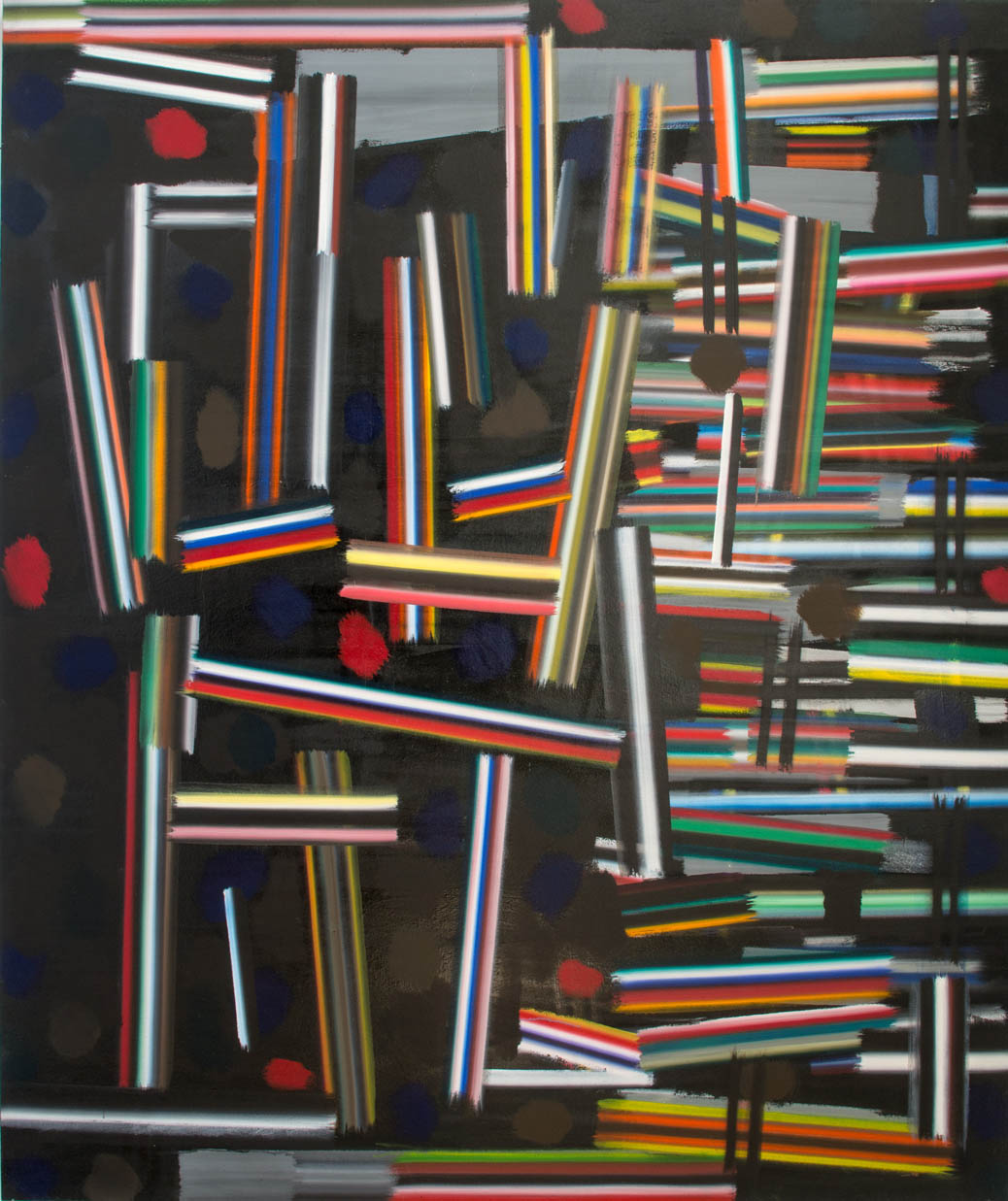 This exhibition presents the work of artists whose work became less fashionable during the 1970s with the rise of conceptual and performance art. While these artists are still working today, most of the work on display is from this period. This is a very diverse exhibition: all of the artists have very individual styles. However, a common feature is an attention to craft, precision and formal values in painting.
This exhibition presents the work of artists whose work became less fashionable during the 1970s with the rise of conceptual and performance art. While these artists are still working today, most of the work on display is from this period. This is a very diverse exhibition: all of the artists have very individual styles. However, a common feature is an attention to craft, precision and formal values in painting.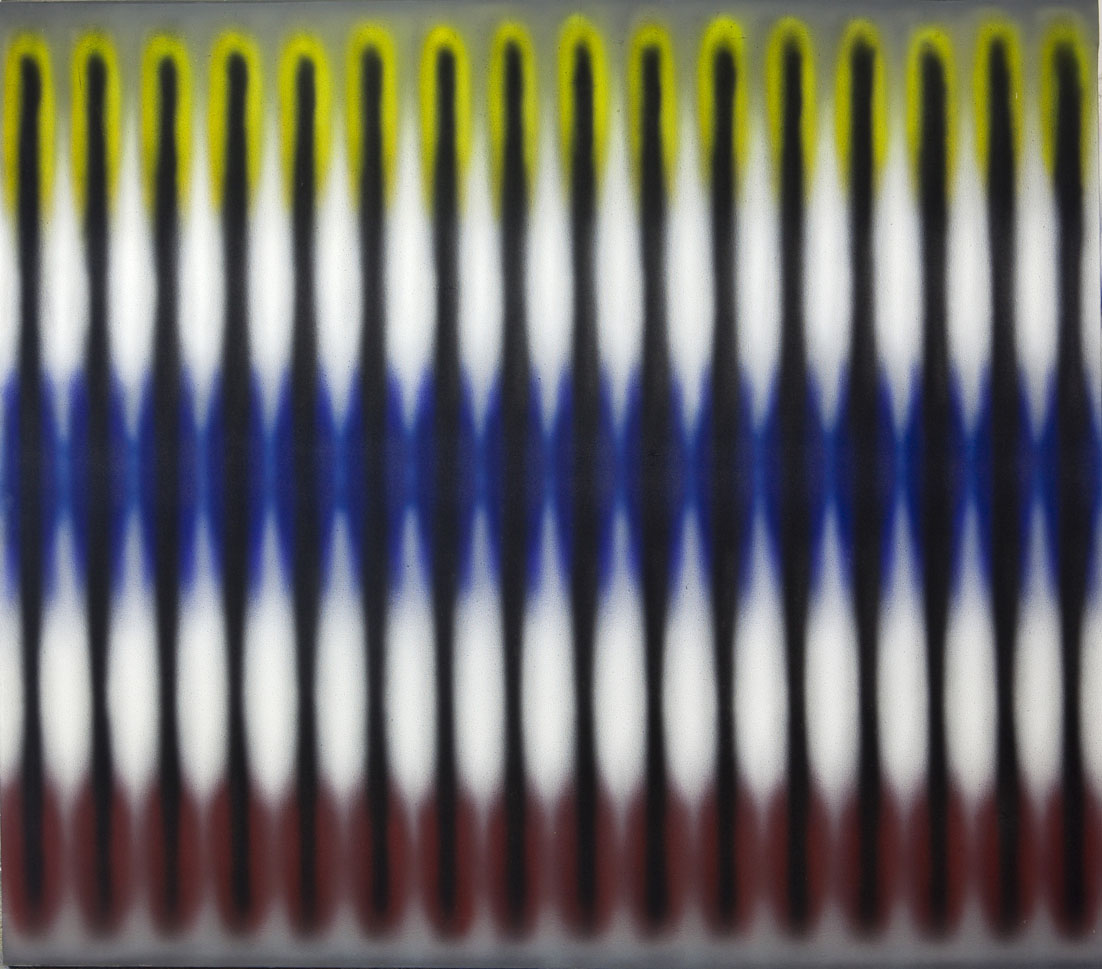 William Henderson and Barrie Cook both use a particular vocabulary to produce very different results. Henderson’s Funky, Blackand Catch Me (1978) creates a feeling of depth and jaggedness, with a definite sense of illusionistic space, reminding one of the microscopic world when magnified. Cook’s Blue, Red and Yellow Grid (1977) is an optical work which plays with the eyes. It is reminiscent of cathode ray tubes warming up in a old-fashioned television. There is a richness in the fact that the two paintings, both using repetitive linear forms, can produce such varied results.
William Henderson and Barrie Cook both use a particular vocabulary to produce very different results. Henderson’s Funky, Blackand Catch Me (1978) creates a feeling of depth and jaggedness, with a definite sense of illusionistic space, reminding one of the microscopic world when magnified. Cook’s Blue, Red and Yellow Grid (1977) is an optical work which plays with the eyes. It is reminiscent of cathode ray tubes warming up in a old-fashioned television. There is a richness in the fact that the two paintings, both using repetitive linear forms, can produce such varied results.
